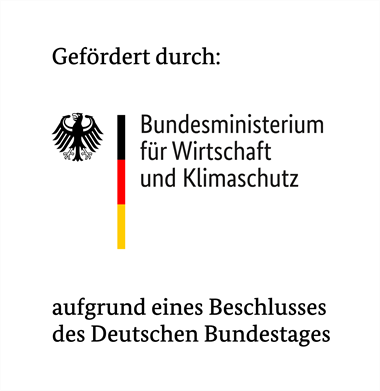Due to the increasing integration of wind actuators on seagoing vessels, there is currently an increased need for prognosis methods in order to adequately take into account the consequential effects caused by the use of wind actuators. Consequential effects such as increased drift angles and significant thrust loads on the propeller can lead to significant changes in the propulsion coefficients. For a targeted design of the propulsion system, the effects of a secondary wind propulsor on the overall system must be recorded as accurately as possible and taken into account in the scaling methods.

| Title: | WIND – Development of test methods for wind-assisted seagoing vessels |
| Term: | 2024 – 2026 |
| Project manager: | Martin Börner |
| Funding: | Bundesministerium für Wirtschaft und Klimaschutz |
| Project administration: | EuroNorm GmbH |
| Reg.-No.: | 49MF240089 |
Since wind is a boundary condition that cannot be influenced and depends heavily on, for example, the time of year and the operating area, it can be useful to specify power prognoses in a polar diagram based on variable wind vectors. Such a prognosis diagram enables the identification of efficient and avoidable operating conditions for the wind propulsors. Unfavorable wind conditions can lead to significant drift angles, which in turn can result in significantly increased hull resistance and additional steering resistance. Furthermore, efficiency losses on the propeller due to oblique flow must be expected.
The creation of a performance prediction for seagoing vessels with the integration of wind propulsors is therefore based on the determination and consideration of all relevant variables that are a direct consequence of wind propulsors. In order to scale these variables as correctly as possible, test and evaluation procedures must be developed. The procedures provided by the ITTC for the preparation of speed and power prognoses are based on idealized conditions and assumptions such as no drift, smooth and deep water conditions. There are currently no ITTC-validated prognosis procedures that take into account the use of wind propulsors under normal propulsion conditions.
Within the scope of this research topic, two methods for conducting and scaling experiments are to be investigated. On the one hand, the free-moving model is to be investigated taking into account defined wind vectors. For this purpose, the model will be equipped with a wind propeller as a replacement system for the wind actuator and a second wind propeller for the friction deduction force to be applied. The model test thus simulates a model of reality that is as physically fully scaled as possible. A second method examines the tethered model. This method is based on the load variation method, whereby the wind force and the friction penalty are part of the measured residual drag force as a function of a defined drift angle.